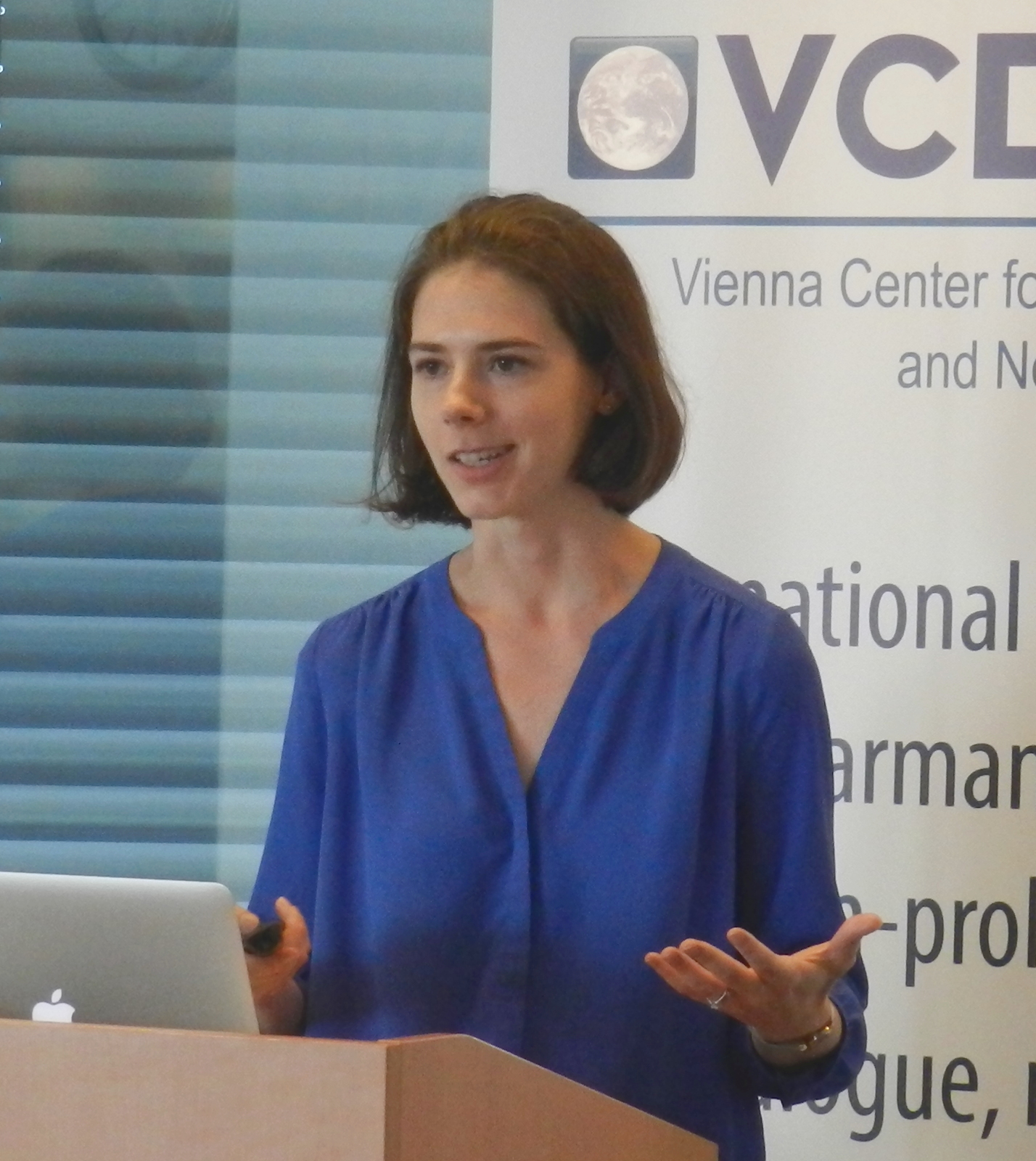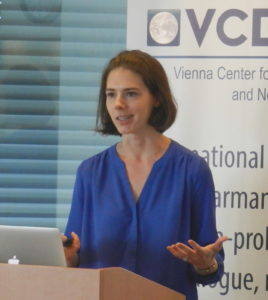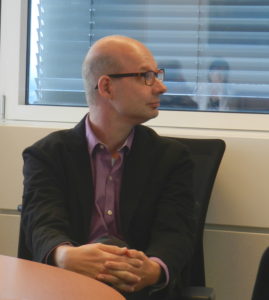
On 28 June 2017, the VCDNP held a seminar by Rachel Carr, Pappalardo Fellow in Physics at the Massachusetts Institute of Technology, and Ferenc Dalnoki-Veress, Scientist-in-Residence at the James Martin Center for Nonproliferation Studies at the Middlebury Institute of International Studies at Monterey, on their current research looking at seismic cueing of antineutrino detectors to identify fission explosions.

The seminar began with a brief introduction on basic physics concepts in order to help the audience understand the particles central to their research endeavor. In the words of Frederick Reines, who was among the first physicists to detect neutrinos in the 1950s and was the recipient of the 1995 Nobel Prize in Physics, a neutrino is “the most tiny quantity of reality ever imagined by a human being.” Three major characteristics of neutrinos are: (1) they are extremely tiny, with a mass less than one millionth of an electron; (2) they are the second most abundant particles in the universe; and (3) they rarely interact with matter and, when they do, they only interact in so‑called “weak interactions.” Antineutrinos share these characteristics with neutrinos. Neutrinos are all around us and are produced from natural sources such as the sun, cosmic rays and supernovas. However, neutrinos and antineutrinos can also be produced artificially through accelerator beams, nuclear reactors and nuclear fission explosions. The panelists focused their attention on the artificial means by which neutrinos and antineutrinos are produced.
Their project sought to make antineutrinos easier to see in a fission explosion by determining when and where to look for antineutrino particles. Following a nuclear fission reaction, the unstable fission products go through different stages of beta decay, in which a neutron decays into a proton, electron and antineutrino. It is estimated that six antineutrinos are produced per fission explosion. In a kiloton nuclear explosion, roughly 1024 antineutrinos are produced and almost all are released within the first 10 seconds of the explosion, accumulating about 5 per cent of the energy output. This output has a variety of unique attributes which could help in detecting fission explosions and complement existing fission detection technologies, such as those deployed in the Comprehensive Nuclear-Test-Ban Treaty Organizations (CTBTO) International Monitoring System (IMS). The following four main attributes make the use of antineutrinos to detect fission explosions very compelling. First, antineutrinos are specific to fission explosions and are not produced in other reactions such as chemical or those resulting from natural seismicity. Second, the output is nearly instant (within the first 10 seconds). Third, antineutrinos carry information relevant to the yield and isotope composition of the fission explosion. Fourth, antineutrinos are unshieldable.
However, since antineutrinos are difficult to see, and since they penetrate through matter, the detectors need to be large enough to create an interaction between an antineutrino and a particle in the detector medium. One attractive detector medium is water. In water, an antineutrino can participate in an inverse beta decay reaction with a proton, resulting in the release of a neutron and a positron which emits a faint flash of light. To make this reaction more visible, an element like gadolinium can be added to the water, as it has a high probability of capturing neutrons and can create a second flash signal. One very large water detector already exists in Japan, and multiple water-based detectors with gadolinium have been proposed worldwide.

The speakers’ current research focuses on combining seismic data of when an explosion took place with the brief timeframe (10 seconds) of when antineutrinos are released, to determine if the observed seismic event was caused by a nuclear explosion. Using seismic‑cueing for this activity makes the identification of a fission explosion about five times more tractable than previously estimated because it limits the ability for background events to mimic a signal. This method also would allow for the estimation of the yield of the explosion. In principle, this capability to rapidly identify a fission explosion and potentially estimate the yield could complement the existing test ban verification technology. The researchers asked the audience for ideas of other applications where this kind of independent check on the source of significant seismic events could be useful for nuclear non-proliferation purposes.
During an interactive question and answer period, clarifications were sought and other potential applications to apply the seismic-cueing method were discussed. Some participants suggested this could be used to monitor a former nuclear test site and assist in monitoring nuclear reactors and their status as a potential safeguards application. Other participants thought about ways this technology could benefit future treaties, even bilateral treaties, in order to enhance confidence between States and their nuclear capabilities. Despite the noted advantages of using seismic-cueing of antineutrino detectors to determine the existence of a fission explosion, the issue of cost was continuously raised, highlighting the challenge in applying this method in practice.
By continuing to use the site, you agree to the use of cookies. more information
The cookie settings on this website are set to "allow cookies" to give you the best browsing experience possible. If you continue to use this website without changing your cookie settings or you click "Accept" below then you are consenting to this.